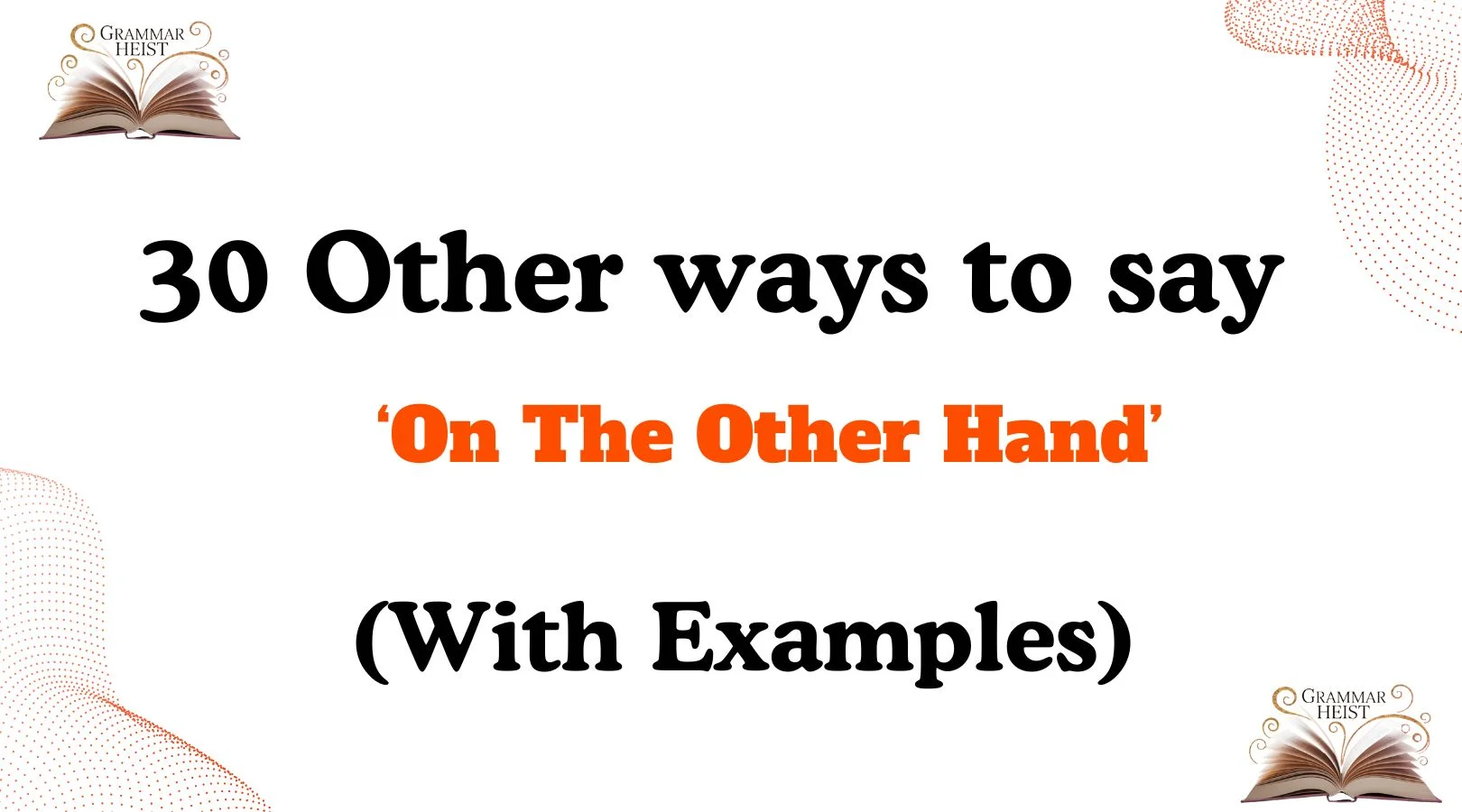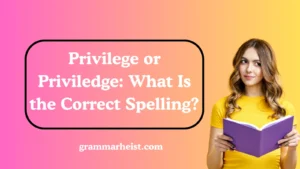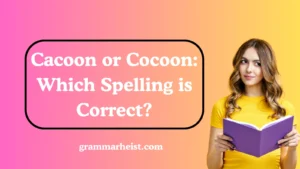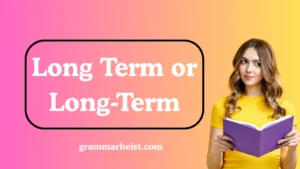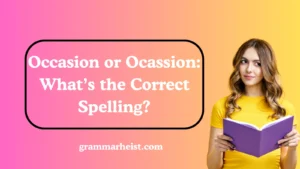Finding the right words can make your message sound more thoughtful, warm, and genuine. Instead of repeating the same phrase again and again, using other ways to say “on the other hand” helps you express contrast and balance in a more personal and meaningful way. Whether you’re writing professionally or casually, these alternatives can make your communication smoother and more empathetic.
What Does “On The Other Hand” Mean?
The phrase “on the other hand” is commonly used to introduce a contrasting idea or perspective. It helps you show balance, consider both sides of a situation, or gently disagree without sounding harsh.
Example:
- I like working from home. On the other hand, I miss interacting with my team.
It’s a simple but powerful way to soften a shift in your message, making your thoughts more well-rounded.
Is It Professional/Polite to Say “On The Other Hand”?
Yes, “on the other hand” is both professional and polite. It’s commonly used in workplaces, academic settings, and everyday conversations. However, using a variety of alternatives can help you sound more natural and expressive, especially in written communication such as emails, presentations, and reports.
Pros or Cons of Saying “On The Other Hand”
✅ Pros:
- Shows balance and understanding
- Softens contrasting opinions
- Works well in both casual and formal settings
❌ Cons:
- Overusing it can sound repetitive
- May feel too structured in casual chats
- Sometimes other phrases sound warmer or more natural
Synonyms For “On The Other Hand”
- Alternatively
- In contrast
- Conversely
- Then again
- At the same time
- Even so
- Nevertheless
- Nonetheless
- In comparison
- In opposition
- On the flip side
- In return
- From another angle
- In another light
- Looking at it differently
- From a different perspective
- From the opposite side
- In reverse
- All the same
- In any case
- Still
- Yet
- But
- Whereas
- While
- On second thought
- In turn
- Rather
- Instead
- From another point of view
1. Alternatively
Scenario:
When you want to offer a different option or idea gently.
Examples:
- We can go for dinner tonight. Alternatively, we could order in.
- You can apply for the job now. Alternatively, wait until next week’s opening.
- We could drive there. Alternatively, taking the train might be easier.
Tone:
Polite, neutral, and balanced.
Explanation:
“Alternatively” is a clean and professional alternative. It works perfectly in emails, reports, or presentations.
2. In Contrast
Scenario:
When you want to clearly highlight differences between two points.
Examples:
- I love city life. In contrast, my sister prefers the countryside.
- The old model was heavy. In contrast, the new one is lightweight.
- He likes fast food. In contrast, I prefer homemade meals.
Tone:
Clear, direct, and formal.
Explanation:
“In contrast” is excellent when you need to emphasize strong differences, especially in formal writing.
3. Conversely
Scenario:
When you want to present the opposite idea in a polished way.
Examples:
- She enjoys the cold. Conversely, I prefer the warmth.
- The plan worked for us. Conversely, it didn’t work for them.
- He’s very outgoing. Conversely, his brother is shy.
Tone:
Formal and elegant.
Explanation:
“Conversely” is best for essays, articles, and professional discussions where you want to sound polished.
4. Then Again
Scenario:
When you want to softly reconsider or express a gentle contrast.
Examples:
- I might go out. Then again, staying in sounds nice.
- I thought the book was boring. Then again, others might love it.
- I like early mornings. Then again, I enjoy sleeping in too.
Tone:
Casual, warm, and reflective.
Explanation:
“Then again” feels natural in conversations, adding a touch of personality.
5. At the Same Time
Scenario:
When you want to balance two sides of a thought.
Examples:
- I’m happy with my job. At the same time, I want new challenges.
- He’s strict. At the same time, he’s fair.
- I’m tired. At the same time, I’m excited.
Tone:
Balanced and thoughtful.
Explanation:
“At the same time” makes your message sound understanding and empathetic.
6. Even So
Scenario:
When you want to acknowledge something but still express a different angle.
Examples:
- It’s risky. Even so, it’s worth trying.
- She’s busy. Even so, she offered to help.
- The weather’s bad. Even so, we’ll go out.
Tone:
Warm, respectful, and hopeful.
Explanation:
“Even so” is great when recognizing a fact but offering another perspective.
7. Nevertheless
Scenario:
When you want to express a contrast with confidence.
Examples:
- It was difficult. Nevertheless, we made it work.
- She was tired. Nevertheless, she finished the task.
- It rained all day. Nevertheless, we had fun.
Tone:
Strong, polite, and encouraging.
Explanation:
“Nevertheless” adds a motivating tone while still acknowledging the contrast.
8. Nonetheless
Scenario:
When you want to express a soft yet firm contrast.
Examples:
- The road was tough. Nonetheless, we reached our goal.
- He failed once. Nonetheless, he tried again.
- It’s expensive. Nonetheless, it’s worth it.
Tone:
Formal, hopeful, and determined.
Explanation:
“Nonetheless” works well in professional, motivational, and personal settings.
9. In Comparison
Scenario:
When comparing two things directly.
Examples:
- The city is busy. In comparison, the village is calm.
- This phone is fast. In comparison, the old one is slow.
- My car is small. In comparison, his is huge.
Tone:
Clear, objective.
Explanation:
“In comparison” is ideal when analyzing or contrasting facts.
10. In Opposition
Scenario:
When expressing a direct and clear disagreement or contrast.
Examples:
- They supported the idea. In opposition, I raised concerns.
- She agreed. In opposition, he strongly disagreed.
- Everyone loved it. In opposition, I wasn’t impressed.
Tone:
Formal and assertive.
Explanation:
“In opposition” is best when discussing debates or differing opinions.
11. On the Flip Side
Scenario:
When you want to present the lighter or opposite side of something in a friendly way.
Examples:
- I love working remotely. On the flip side, I sometimes miss the office vibe.
- It’s cheaper. On the flip side, it may not last long.
- He’s very confident. On the flip side, it can come off as arrogant.
Tone:
Casual, warm, conversational.
Explanation:
“On the flip side” is perfect for everyday conversations. It’s friendly, easygoing, and adds personality to your message.
12. In Return
Scenario:
When expressing contrast in actions or outcomes.
Examples:
- I helped him move. In return, he cooked me dinner.
- She supported me. In return, I backed her up too.
- He worked overtime. In return, he got a bonus.
Tone:
Balanced, fair, neutral.
Explanation:
“In return” works well when highlighting cause and effect, often with a positive tone.
13. From Another Angle
Scenario:
When you want to show a different point of view gently.
Examples:
- It seems risky. From another angle, it could be a great opportunity.
- That’s one way to see it. From another angle, it’s a smart move.
- It may look hard. From another angle, it’s a challenge worth taking.
Tone:
Warm, reflective, open-minded.
Explanation:
This phrase shows thoughtfulness and encourages understanding of other perspectives.
14. In Another Light
Scenario:
When asking someone to see something differently.
Examples:
- It looked bad at first. In another light, it’s actually a blessing.
- The decision felt harsh. In another light, it was necessary.
- She seemed rude. In another light, she was just nervous.
Tone:
Gentle, empathetic, understanding.
Explanation:
“In another light” softens contrast and encourages kind and patient communication.
15. Looking at It Differently
Scenario:
When reframing a thought or discussion.
Examples:
- It’s a failure. Looking at it differently, it’s a lesson.
- We lost a client. Looking at it differently, we learned a lot.
- It’s a delay. Looking at it differently, it gives us more time.
Tone:
Warm, encouraging, thoughtful.
Explanation:
This phrase is great for positive reframing and gentle contrasts.
16. From a Different Perspective
Scenario:
When presenting a new or contrasting viewpoint thoughtfully.
Examples:
- It seems like a problem. From a different perspective, it’s a chance to grow.
- We may disagree. From a different perspective, both points are valid.
- It looks hard. From a different perspective, it’s manageable.
Tone:
Neutral, reflective, open.
Explanation:
This is an excellent choice for discussions, meetings, or peaceful conversations.
17. From the Opposite Side
Scenario:
When you want to clearly highlight the other side of an argument.
Examples:
- I agree with you. From the opposite side, some may disagree.
- It benefits us. From the opposite side, it may affect others.
- The plan works here. From the opposite side, it may not elsewhere.
Tone:
Clear, balanced, respectful.
Explanation:
“From the opposite side” gives your speech or writing a structured and fair tone.
Read More:30 Other Ways to Say ‘The End’ (With Examples)
18. In Reverse
Scenario:
When flipping a situation or idea.
Examples:
- Usually, I teach. In reverse, today I learned from them.
- She helped me first. In reverse, I helped her this time.
- He often leads. In reverse, he followed today.
Tone:
Simple, neutral, flexible.
Explanation:
This phrase works well when switching perspectives or roles.
19. All the Same
Scenario:
When expressing contrast gently without sounding firm.
Examples:
- It’s expensive. All the same, it’s worth buying.
- He’s late. All the same, I trust him.
- It’s tough. All the same, I’ll try my best.
Tone:
Warm, gentle, calm.
Explanation:
“All the same” is great for soft contrasts and understanding tones.
20. In Any Case
Scenario:
When moving forward with your point despite differences.
Examples:
- He may disagree. In any case, I’ll do my part.
- It might rain. In any case, we’ll enjoy the day.
- She’s unsure. In any case, we’ll support her.
Tone:
Firm but polite.
Explanation:
“In any case” expresses decision or acceptance, while acknowledging another side.
21. Still
Scenario:
When acknowledging a fact but gently adding contrast.
Examples:
- It was raining. Still, we had fun.
- She’s tired. Still, she’s smiling.
- It’s not perfect. Still, I love it.
Tone:
Warm, soft, reflective.
Explanation:
“Still” is a short but emotionally rich way to show contrast without sounding harsh.
22. Yet
Scenario:
When expressing contrast with confidence and simplicity.
Examples:
- It’s late. Yet, I feel energetic.
- He’s shy. Yet, he speaks with confidence when needed.
- It’s risky. Yet, I want to try.
Tone:
Neutral, slightly formal.
Explanation:
“Yet” is elegant and works both in casual and professional communication.
23. But
Scenario:
When giving a direct contrast in the simplest way.
Examples:
- I like the idea, but it needs improvement.
- He’s kind, but strict.
- It’s fun, but exhausting.
Tone:
Direct, natural.
Explanation:
“But” is one of the most common and versatile contrast words. Use it wisely to avoid sounding too sharp.
24. Whereas
Scenario:
When comparing two ideas directly.
Examples:
- I like coffee, whereas she prefers tea.
- He’s loud, whereas I’m quiet.
- We work fast, whereas they take their time.
Tone:
Neutral, clear, professional.
Explanation:
“Whereas” works well in formal writing and presentations.
25. While
Scenario:
When softly contrasting two ideas or events.
Examples:
- I enjoy summer, while he loves winter.
- She’s studying, while I’m working.
- I agree, while also seeing your point.
Tone:
Polite, balanced, thoughtful.
Explanation:
“While” helps in expressing balance without sounding argumentative.
26. On Second Thought
Scenario:
When changing your mind gently.
Examples:
- I was going to say yes. On second thought, maybe not.
- I planned to go. On second thought, I’ll stay home.
- I liked the idea. On second thought, I have concerns.
Tone:
Warm, reflective, natural.
Explanation:
This phrase adds a personal and gentle touch to your contrast.
27. In Turn
Scenario:
When expressing a reciprocal or following contrast.
Examples:
- She helped me. In turn, I supported her.
- He inspired me. In turn, I inspired others.
- They gave. In turn, they received.
Tone:
Neutral, polite, balanced.
Explanation:
“In turn” highlights cause and effect, perfect for storytelling or structured writing.
28. Rather
Scenario:
When offering an alternative gently.
Examples:
- I’d like coffee, rather than tea.
- He chose to walk, rather than drive.
- I’ll listen, rather than speak.
Tone:
Calm, polite, clear.
Explanation:
“Rather” is excellent when replacing an idea without sounding negative.
29. Instead
Scenario:
When offering a replacement or opposite choice.
Examples:
- I’ll stay home instead of going out.
- Let’s walk instead of driving.
- She called me instead of texting.
Tone:
Neutral, simple, conversational.
Explanation:
“Instead” is a straightforward and very common alternative for contrast.
30. From Another Point of View
Scenario:
When gently inviting someone to consider a different perspective.
Examples:
- It looks difficult. From another point of view, it’s exciting.
- That’s one way to see it. From another point of view, it’s inspiring.
- It may seem wrong. From another point of view, it’s brave.
Tone:
Warm, reflective, understanding.
Explanation:
“From another point of view” is perfect for thoughtful conversations and open discussions.
📝 Conclusion
Using different ways to say “on the other hand” allows your words to feel more personal, expressive, and empathetic. These phrases help you balance your message, acknowledge both sides, and communicate with clarity. Whether it’s a casual chat, a work email, or a presentation, these alternatives bring a genuine and human touch to your language.

Emma Rose is a dedicated writing expert with a passion for helping others enhance their communication skills. With a strong background in grammar, language structure, and style, Emma empowers individuals to write with clarity, confidence, and impact. Her approach combines a keen attention to detail with a supportive, personalized touch, ensuring each person she works with improves and grows in their writing journey.
